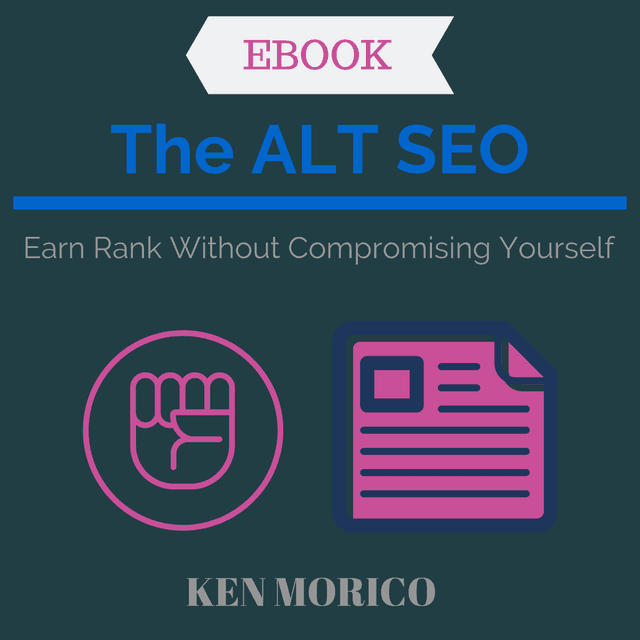BOOK – The ALT SEO
Earn Rank Without Compromising Yourself

The ALT SEO
Earn Rank Without Compromising Yourself
Downloadable PDF / eBook
By Ken Morico
SUMMARY - SEO Book
In my book, The ALT SEO, I explain long-trusted Search Engine Optimization techniques along with myths. Skip years of trial and error work and benefit from my decades of experience performing optimization techniques that rocketed my sites and my client’s sites to the first pages of Google Search Engine Results page.
I explain the holistic SEO approach to your site with concrete, actionable items you can use right away.
The ALT SEO is a labor of love and hard work.
The ALT SEO was written in Houston, TX by me, a professional writer in 2015 and revised through the years.
Enjoy this free gift from me to you…
DOWNLOAD NOW
[PDF Version]
Like the Book? Want More Totally Free Content?
Subscribe to the Newsletter
Table of Contents
- The ALT SEO
- Getting Beefy
- Google Makes Content a Priority — Don’t Fight the Trend
- LISTEN to Blog Commenters
- Original Content, Original Me
- Ads on the Site
- Killer Adsense Ads or Kill the Adsense Ads?
- In the Technical SEO Weeds
- Semantic Markup for SEO — It’s Part of Google Panda Optimization
- Clean / Fix Sitemaps for SEO
- Beyond Google – There is Microsoft Bing
- Keep Up with your Web Stats
- Update Your Content on the Go with a CMS/WordPress Mobile App
- Link Building for SEO – Free Advertising with Just a Little Hustle
- Why link building?
- Talk to Journalists
- Guest Blogging / Prospecting
- Where Are You At?
- Backlink Tools
- Video for SEO
- How Can YouTube Videos Be Helpful to My Web site?
- Produce (or Steal) Web Video and Juice SEO
- Increase Your Odds for Ranking on the SERPs
- Producing Web Video is a Lot of Work – “Steal” for Inbound Marketing
- The Apple TV Gamechanger
- The Never-ending Conclusion
- About Ken Morico
When you’re done downloading the book, see more books.

